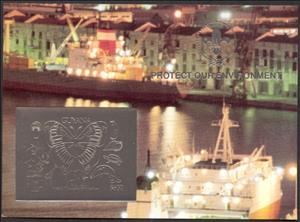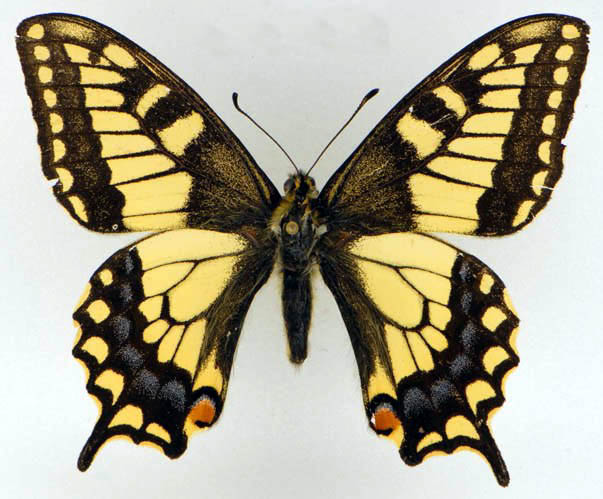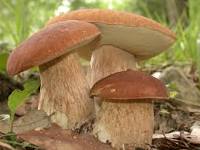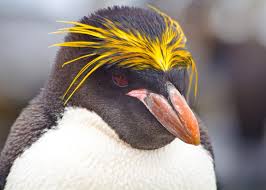Souvenir Sheet: Mushroom, Butterfly, Penguin, Triceratops, Sea Snail, Turtl… (Guyana 1993)
Mushroom, Butterfly, Penguin, Triceratops, Sea Snail, Turtl… (Guyana 1993)
01 September (Guyana ) within release Boy Scouts and Environmental Protection goes into circulation Souvenir Sheet Mushroom, Butterfly, Penguin, Triceratops, Sea Snail, Turtl… face value 600 Guyanese dollar
| Souvenir Sheet Mushroom, Butterfly, Penguin, Triceratops, Sea Snail, Turtl… in catalogues | |
|---|---|
| Michel: | Mi: GY BL308 |
| Colnect codes: | Col: GY 1993.09.01-18 |
Souvenir Sheet is horizontal format.
Also in the issue Boy Scouts and Environmental Protection:
- Souvenir Sheet - Dog, Bear, Rabbit, Puma, Butterfly, Triceratops face value 600;
- Souvenir Sheet - Dog, Bear, Rabbit, Puma, Butterfly, Triceratops face value 600;
- Souvenir Sheet - Mushroom, Butterfly, Penguin, Triceratops, Sea Snail, Turtl… face value 600;
- Souvenir Sheet - Mushroom, Butterfly, Penguin, Triceratops, Sea Snail, Turtl… face value 600;
- Souvenir Sheet - Penguin, Butterfly, Owl, Rock, Swordfish, Orchid face value 600;
- Souvenir Sheet - Penguin, Butterfly, Owl, Rock, Swordfish, Orchid face value 600;
Souvenir Sheet Mushroom, Butterfly, Penguin, Triceratops, Sea Snail, Turtl… it reflects the thematic directions:
Lepidoptera or lepidopterans is an order of winged insects which includes butterflies and moths. About 180,000 species of the Lepidoptera have been described, representing 10% of the total described species of living organisms, making it the second largest insect order (behind Coleoptera) with 126 families and 46 superfamilies, and one of the most widespread and widely recognizable insect orders in the world
Dinosaurs are a diverse group of reptiles of the clade Dinosauria. They first appeared during the Triassic period, between 243 and 233.23 million years ago (mya), although the exact origin and timing of the evolution of dinosaurs is a subject of active research. They became the dominant terrestrial vertebrates after the Triassic–Jurassic extinction event 201.3 mya and their dominance continued throughout the Jurassic and Cretaceous periods. The fossil record shows that birds are feathered dinosaurs, having evolved from earlier theropods during the Late Jurassic epoch, and are the only dinosaur lineage known to have survived the Cretaceous–Paleogene extinction event approximately 66 mya. Dinosaurs can therefore be divided into avian dinosaurs—birds—and the extinct non-avian dinosaurs, which are all dinosaurs other than birds.
A mushroom (or toadstool) is the fleshy, spore-bearing fruiting body of a fungus, typically produced above ground on soil or on its food source. The standard for the name "mushroom" is the cultivated white button mushroom, Agaricus bisporus; hence the word "mushroom" is most often applied to those fungi (Basidiomycota, Agaricomycetes) that have a stem (stipe), a cap (pileus), and gills (lamellae, sing. lamella) on the underside of the cap. These gills produce microscopic spores that help the fungus spread across the ground or its occupant surface. "Mushroom" describes a variety of gilled fungi, with or without stems, and the term is used even more generally, to describe both the fleshy fruiting bodies of some Ascomycota and the woody or leathery fruiting bodies of some Basidiomycota, depending upon the context of the word. Forms deviating from the standard morphology usually have more specific names, such as "bolete", "puffball", "stinkhorn", and "morel", and gilled mushrooms themselves are often called "agarics" in reference to their similarity to Agaricus or their order Agaricales. By extension, the term "mushroom" can also designate the entire fungus when in culture; the thallus (called a mycelium) of species forming the fruiting bodies called mushrooms; or the species itself.
Penguins are a group of aquatic flightless birds from the family Spheniscidae (/sfɪˈnɪsɪdiː, -daɪ/) of the order Sphenisciformes (/sfɪˈnɪsəfɔːrmiːz/). They live almost exclusively in the Southern Hemisphere: only one species, the Galápagos penguin, is found north of the Equator. Highly adapted for life in the ocean water, penguins have countershaded dark and white plumage and flippers for swimming. Most penguins feed on krill, fish, squid and other forms of sea life which they catch with their bills and swallow whole while swimming. A penguin has a spiny tongue and powerful jaws to grip slippery prey
A ship is a large watercraft that travels the world's oceans and other sufficiently deep waterways, carrying passengers or goods, or in support of specialized missions, such as defense, research and fishing. Historically, a "ship" was a sailing vessel with at least three square-rigged masts and a full bowsprit. Ships are generally distinguished from boats, based on size, shape and load capacity.
Turtles are reptiles of the order Testudines, characterized by a special shell developed mainly from their ribs. Modern turtles are divided into two major groups, the Pleurodira (side necked turtles) and Cryptodira (hidden necked turtles), which differ in the way the head retracts. There are 360 living and recently extinct species of turtles, including land-dwelling tortoises and freshwater terrapins. They are found on most continents, some islands and, in the case of sea turtles, much of the ocean. Like other amniotes (reptiles, birds, and mammals) they breathe air and do not lay eggs underwater, although many species live in or around water.






